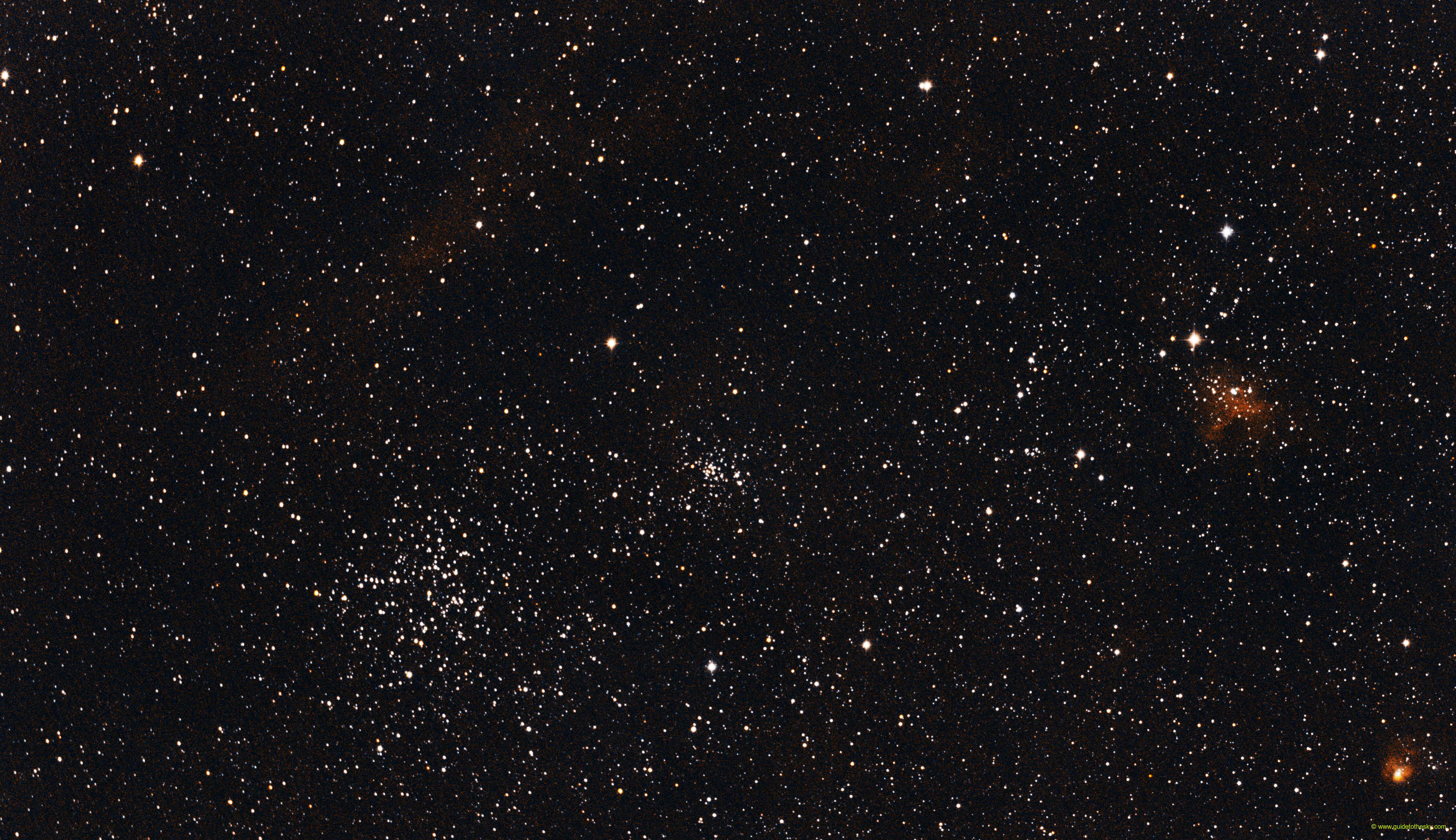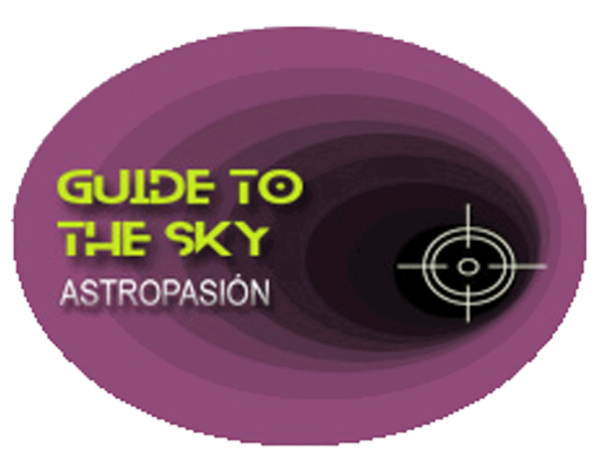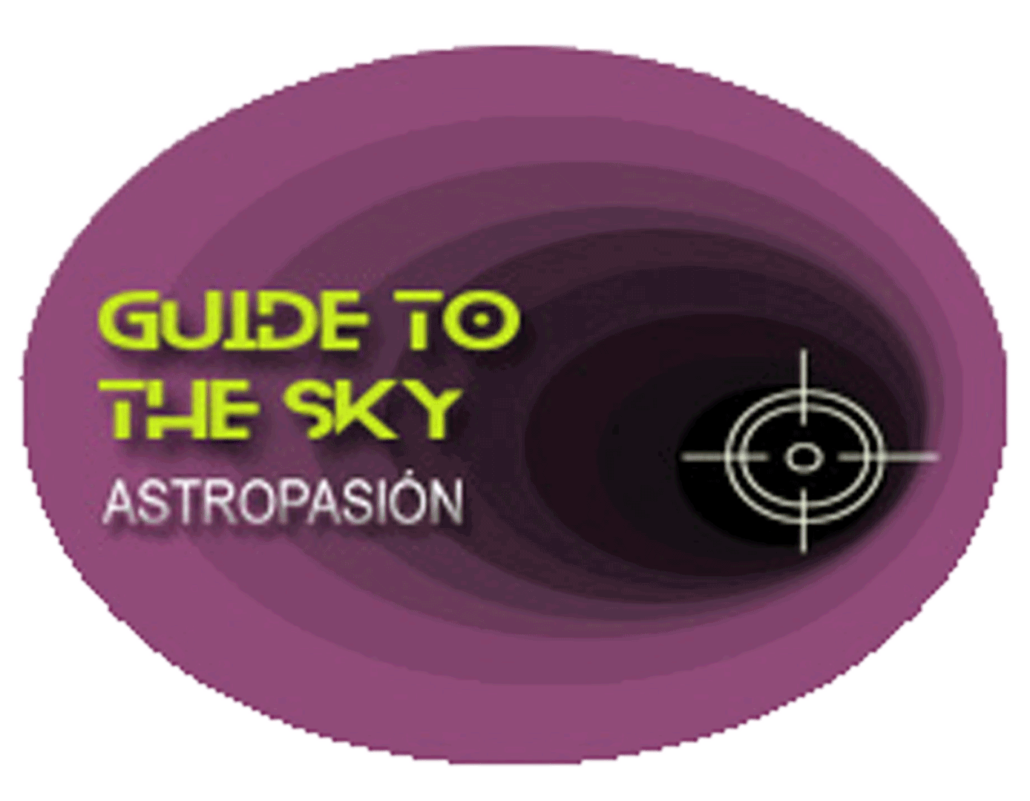Messier 38 - Auriga

Exp: 24m 49s
M38 o NGC 1912 es un gran cúmulo abierto en la constelación de Auriga. Junto a M36 y M37 forma parte de los conjunto de los Grandes cúmulos de Ariga.
Brilla desde {{ object[0].M38.mesDistances[0].dist }} {{ object[0].M38.mesDistances[0].unit }} con una {{ object[0].M38.visualMagnitude }} de magnitud visual y está acompañado por varios objectos, uno de ellos es el cúmulo NGC1907, que aquí aparece en el centro de la imagen.
Es posible ver en, como en esta fotografía varias nebulosas interesantes y cercanas a M38, como IC 407 y NGC 1931, llamadas respectivamente Nebulosa de la araña y de la Mosca o, si lo preferimos Spider and Fly Nebula.
Brilla desde {{ object[0].M38.mesDistances[0].dist }} {{ object[0].M38.mesDistances[0].unit }} con una {{ object[0].M38.visualMagnitude }} de magnitud visual y está acompañado por varios objectos, uno de ellos es el cúmulo NGC1907, que aquí aparece en el centro de la imagen.
Es posible ver en, como en esta fotografía varias nebulosas interesantes y cercanas a M38, como IC 407 y NGC 1931, llamadas respectivamente Nebulosa de la araña y de la Mosca o, si lo preferimos Spider and Fly Nebula.
M38 - - en la IA
Messier 38 (M38), also known as the Starfish Cluster or NGC 1912, is a bright open cluster in the constellation Auriga. Here's a breakdown of its key features:
Key Facts:
- Type: Open Cluster
- Constellation: Auriga
- Distance: Approximately 4,200 light-years from Earth. Estimates vary, but this is a commonly accepted value.
- Age: Estimated to be about 220 million years old. This makes it an intermediate-aged open cluster.
- Apparent Magnitude: +7.9 (fairly bright, visible in binoculars and small telescopes under good conditions)
- Size: Covers an area of the sky about the size of the full moon (approximately 21 arcminutes).
- Notable Features:
- Starfish Shape: The cluster gets its nickname from its distinctive X-shaped or saltire-like appearance, particularly visible in photographs.
- Yellow Giants: It contains several prominent yellow giant stars, the brightest of which is a G0-type yellow supergiant with an apparent magnitude of around 7.9. These evolved stars contribute significantly to the cluster's overall luminosity.
- Metallicity: M38 has a metallicity similar to the Sun, meaning the stars within it have a similar abundance of elements heavier than hydrogen and helium.
How to Observe:
- Binoculars: Even with binoculars, you can spot M38 as a fuzzy patch of light. Look for the characteristic X-shape with larger binoculars or a small telescope.
- Telescopes: Small to medium-sized telescopes (60-100mm aperture) will resolve individual stars within the cluster, revealing its intricate structure and the beautiful grouping of stars. Larger telescopes can reveal fainter stars within the cluster.
- Location: Auriga is a winter constellation in the northern hemisphere. It is easily found by locating Capella, one of the brightest stars in the sky. M38 is located about 4 degrees northwest of θ Aurigae.
Significance:
- Stellar Evolution: M38, with its well-defined age and distance, is valuable for studying stellar evolution. Astronomers can compare the observed properties of its stars with theoretical models to better understand how stars age and change over time.
- Cluster Dynamics: Studying the motions and distribution of stars within M38 helps astronomers understand the dynamics of open clusters, including how they form, how they evolve, and how they eventually disperse.
In summary, Messier 38 is a beautiful and relatively bright open cluster that is accessible to amateur astronomers with binoculars or small telescopes. Its distinctive shape and intermediate age make it a fascinating object to observe and study.
Más información sobre Messier 38 en NASA/IPAC.
Mapa alrededor de Messier 38
Otros identificadores de M38:
"[KC2019] Theia 874","C 0525+358" ,"M 38" ,"NGC 1912" ,"OCl 433.0" ,"[KPR2004b] 71" ,"[KPS2012] MWSC 0557",

